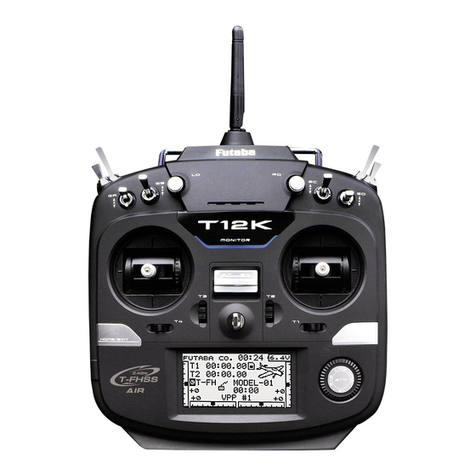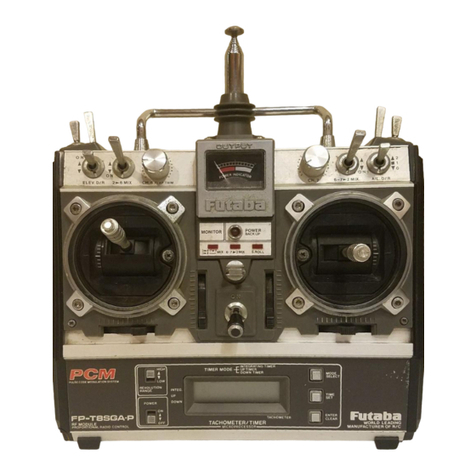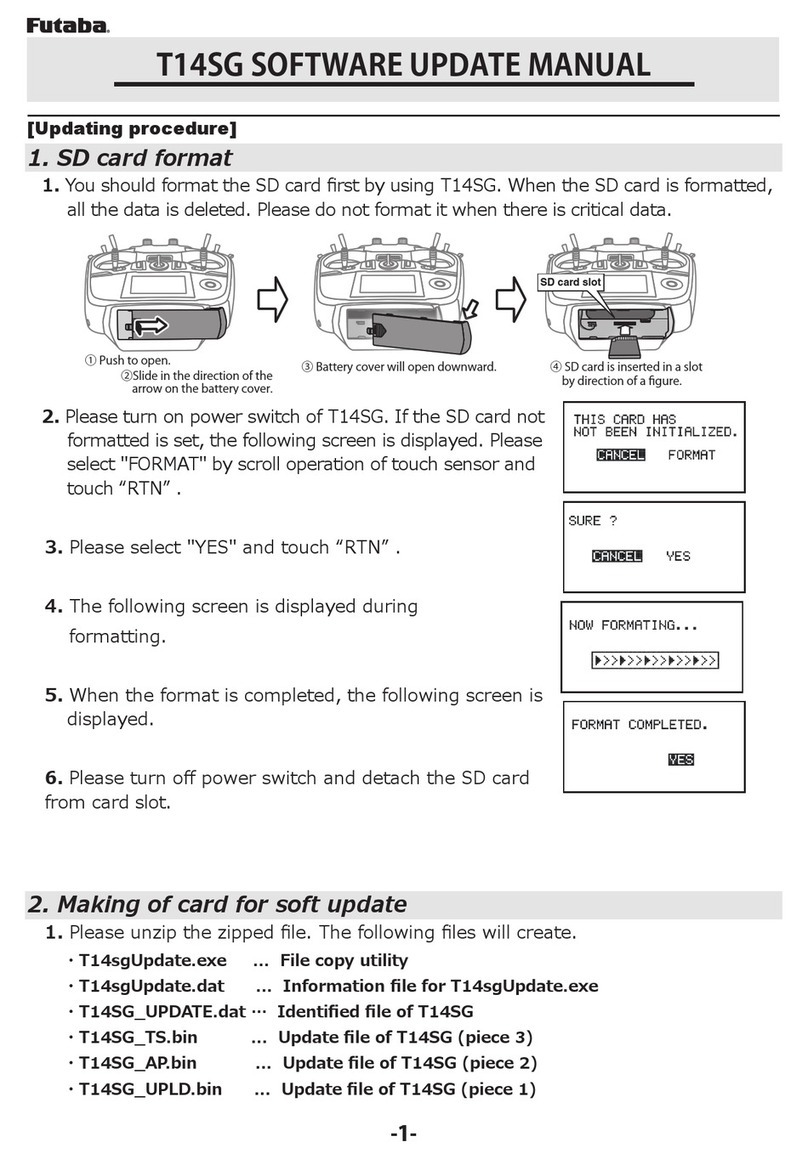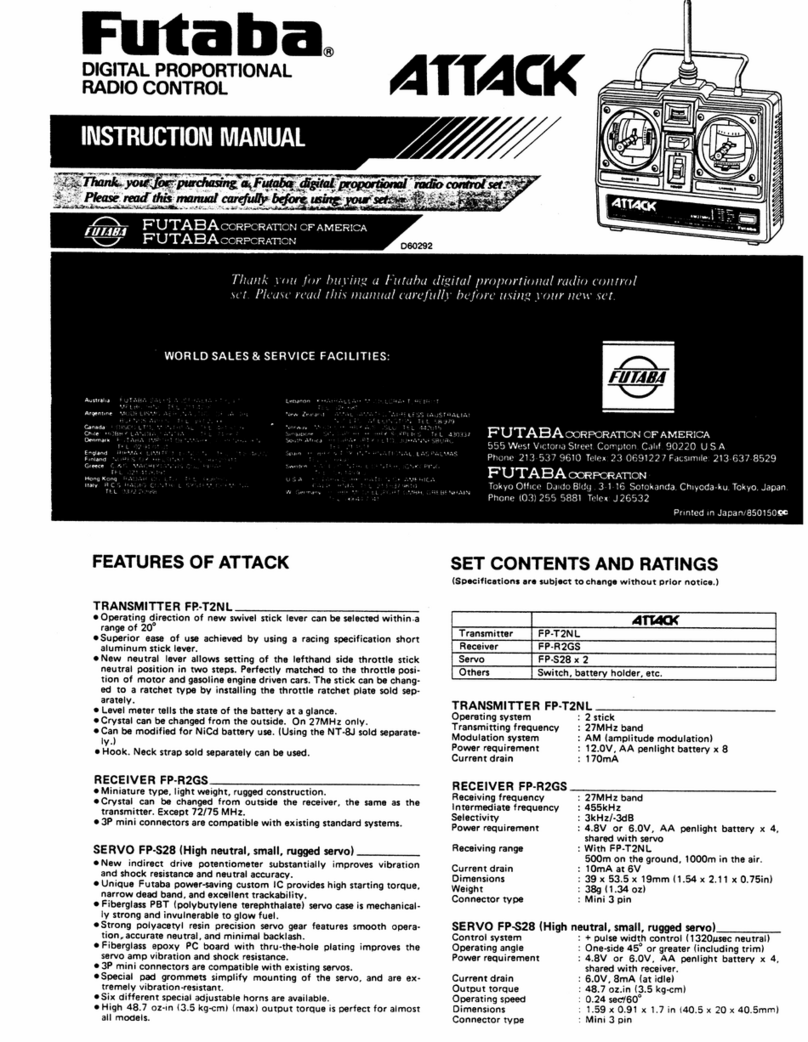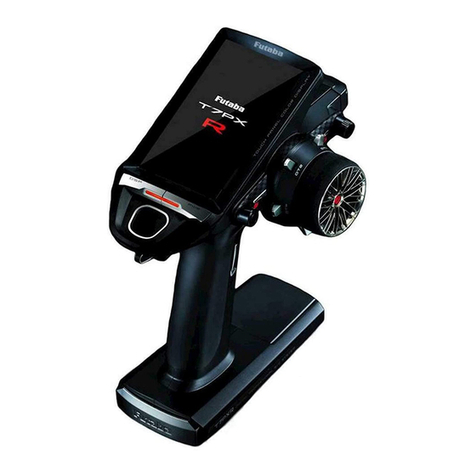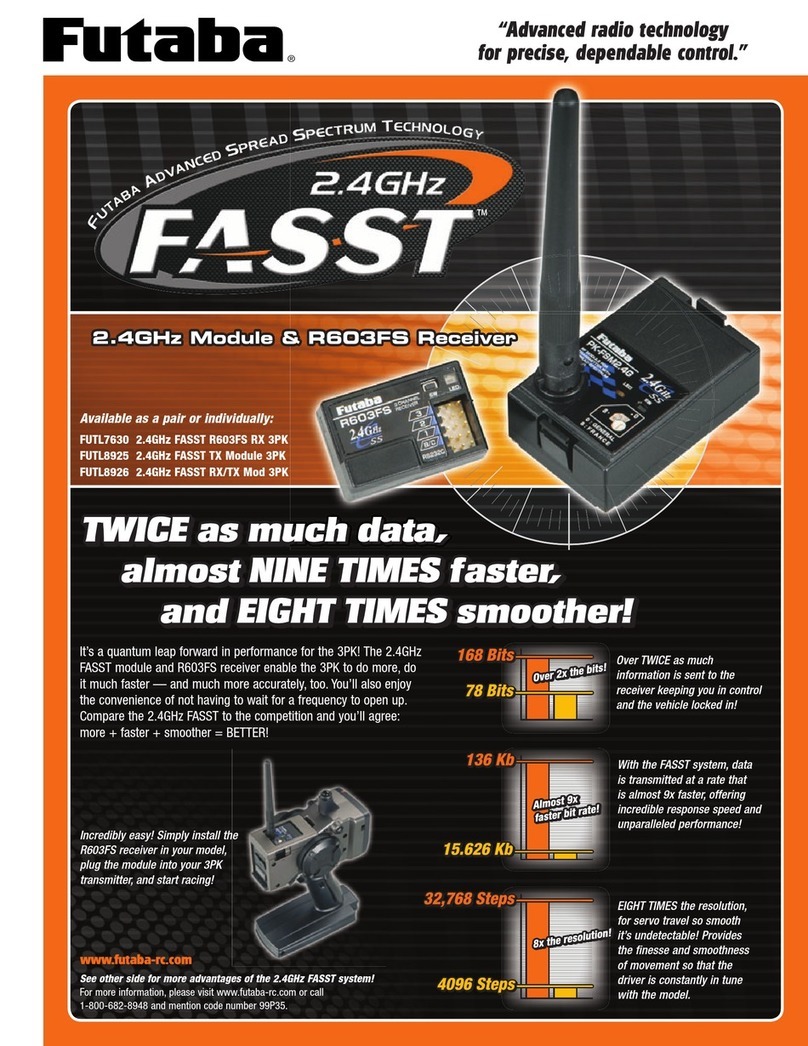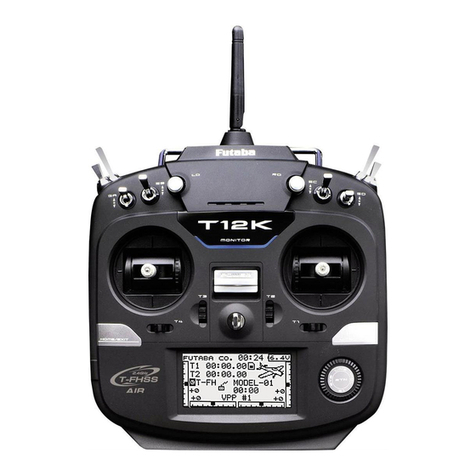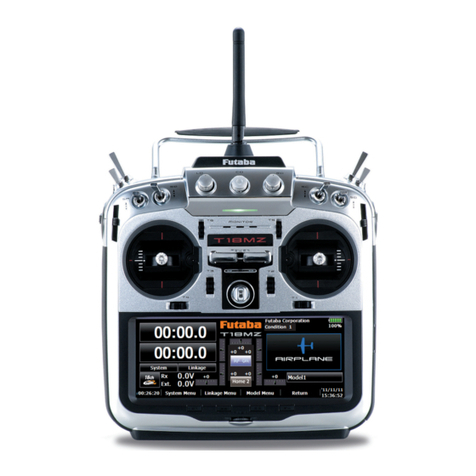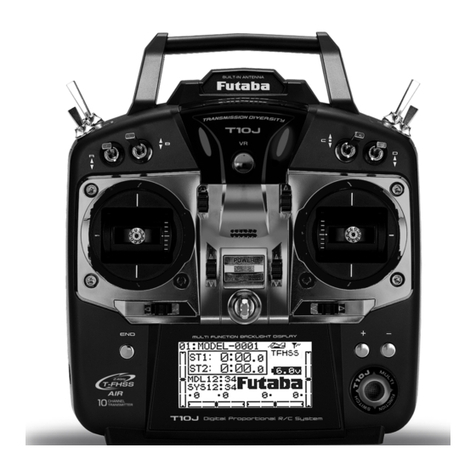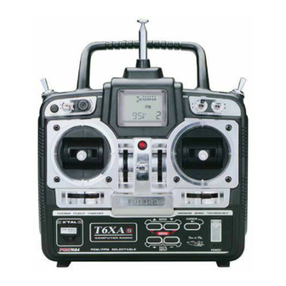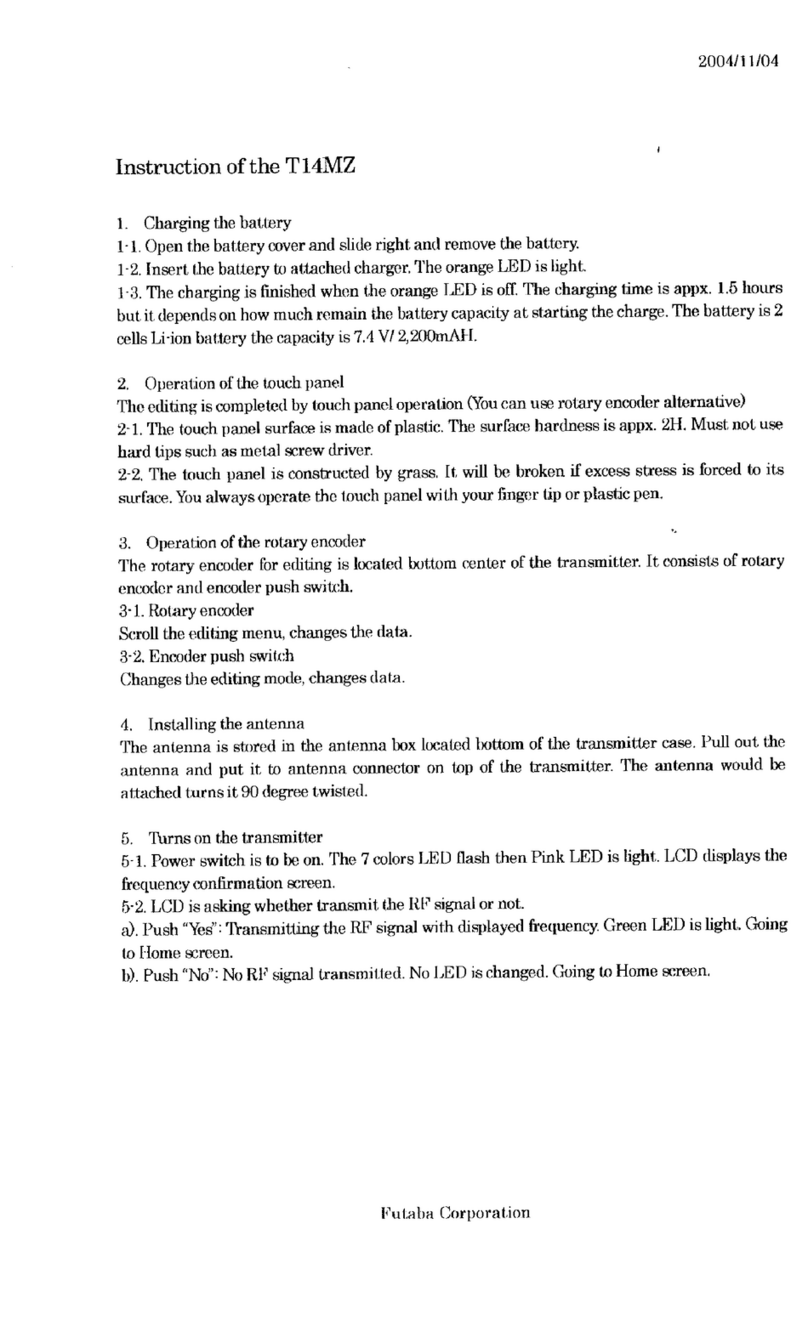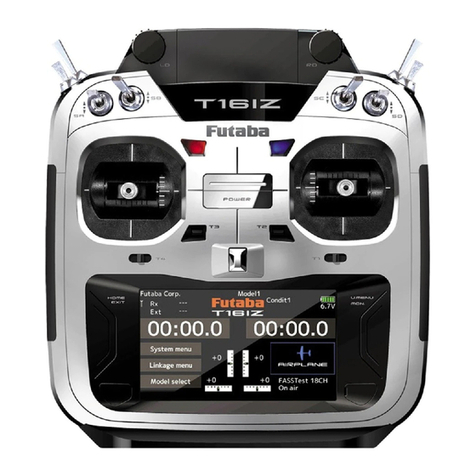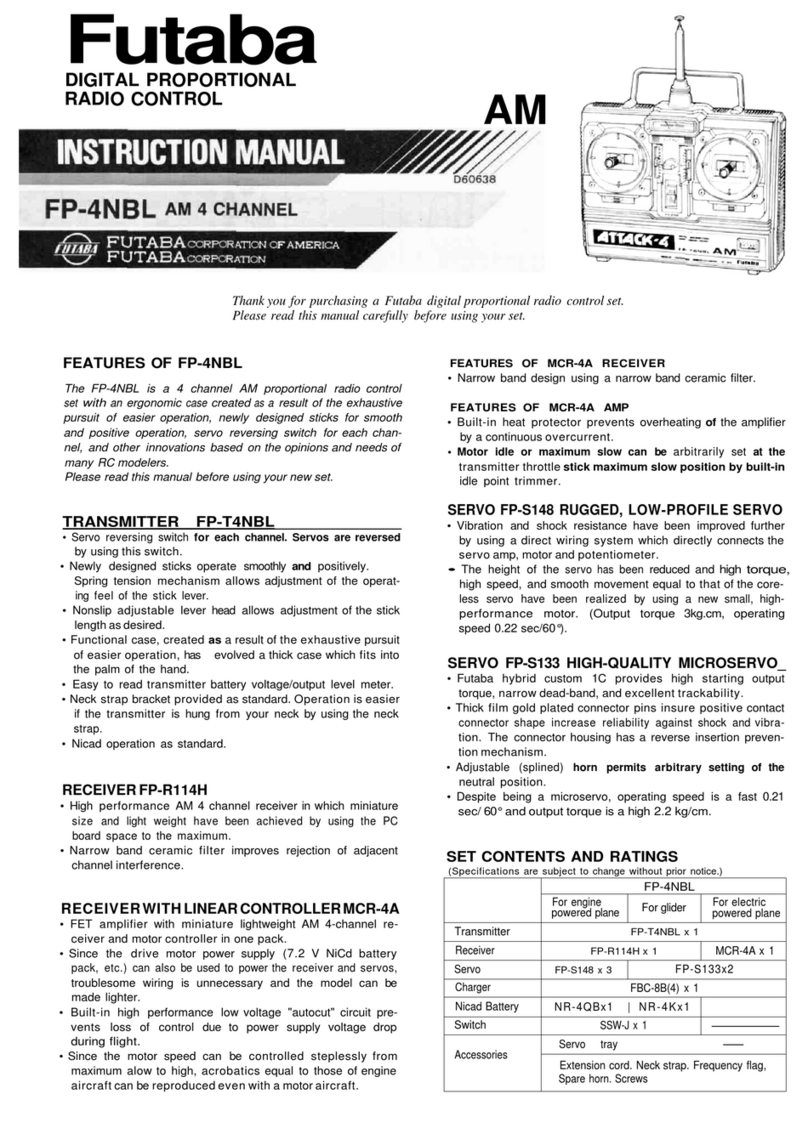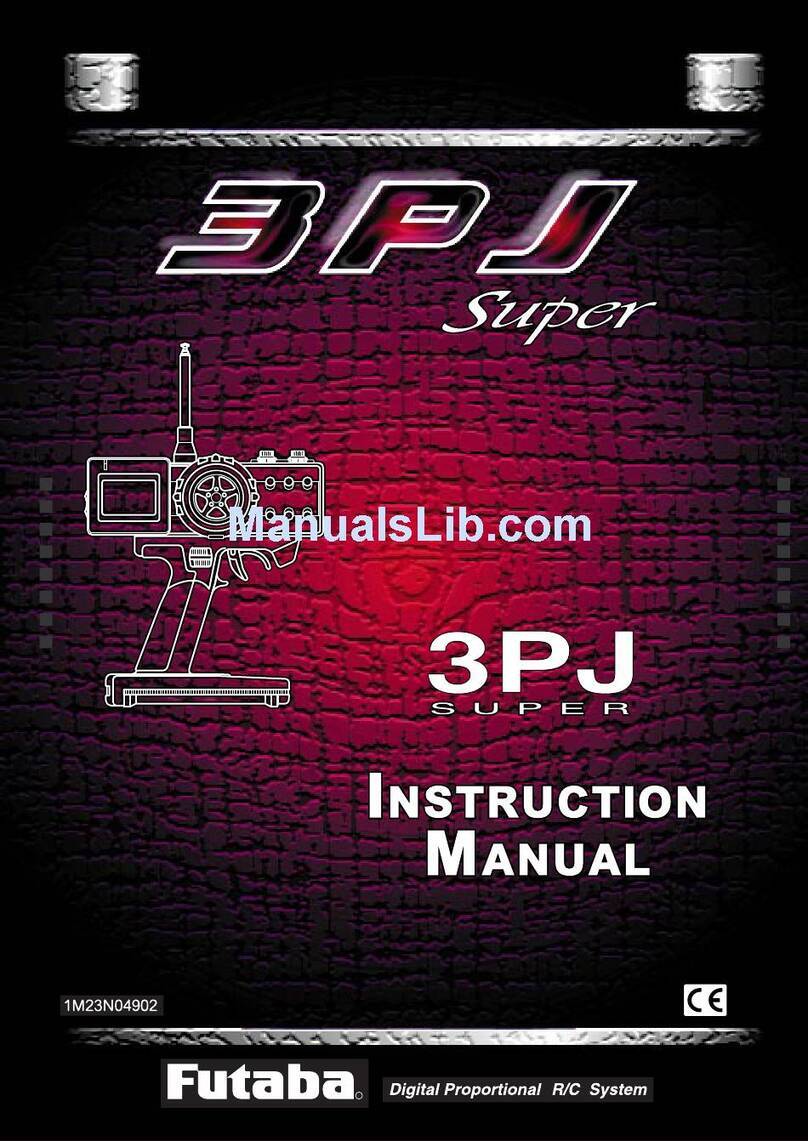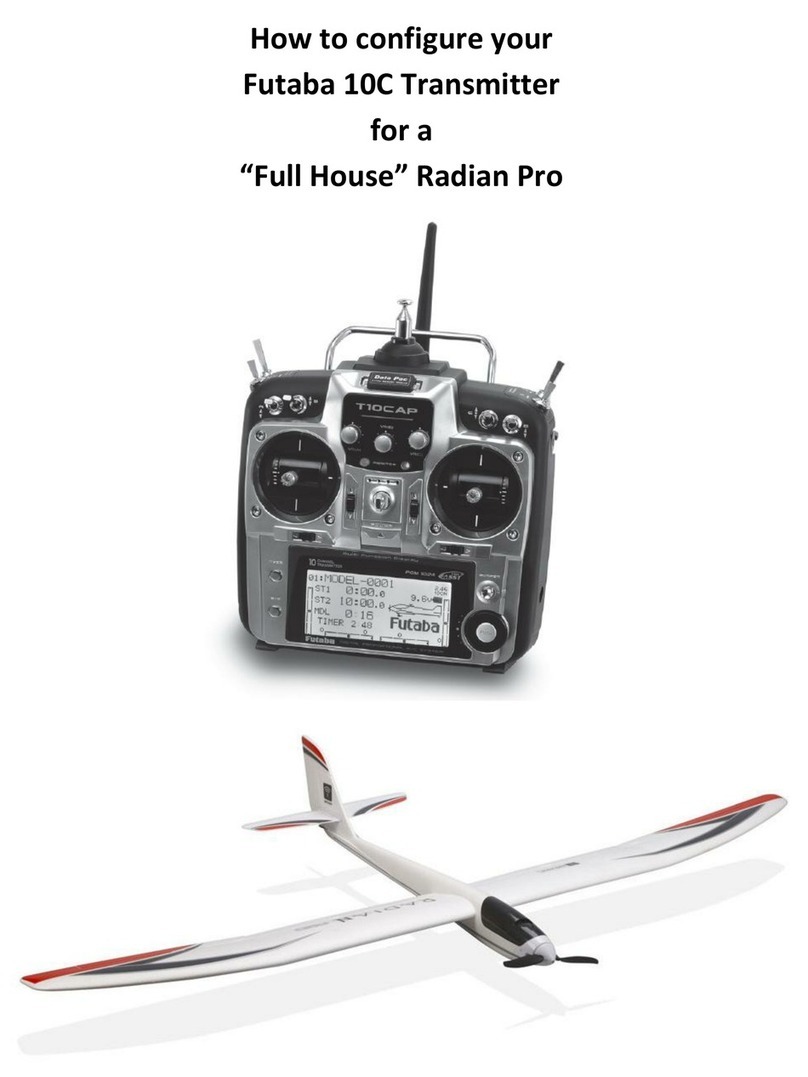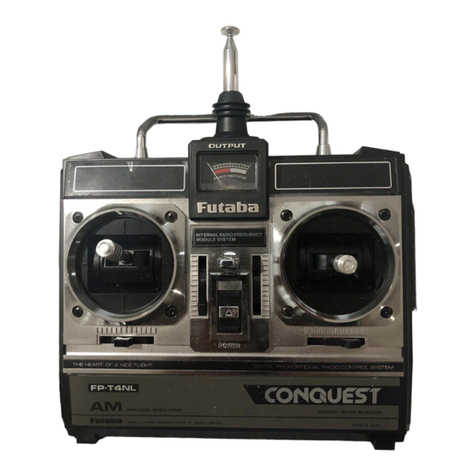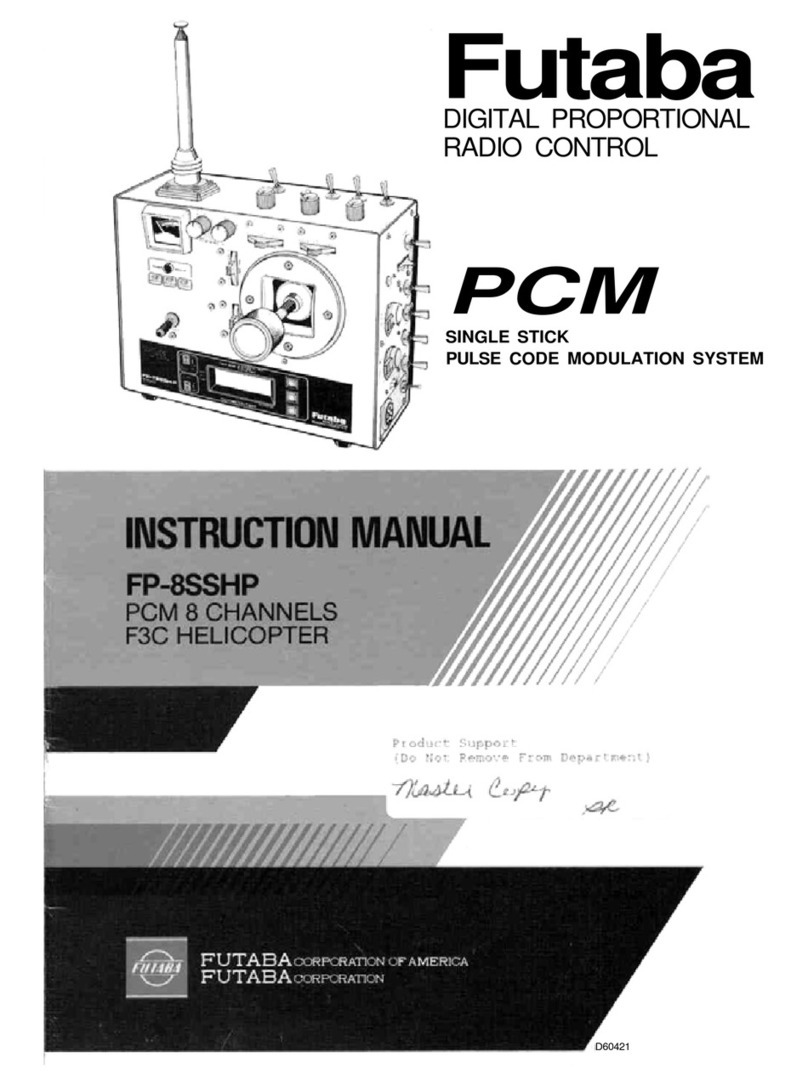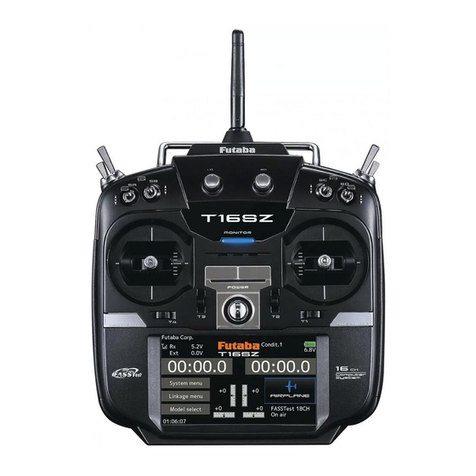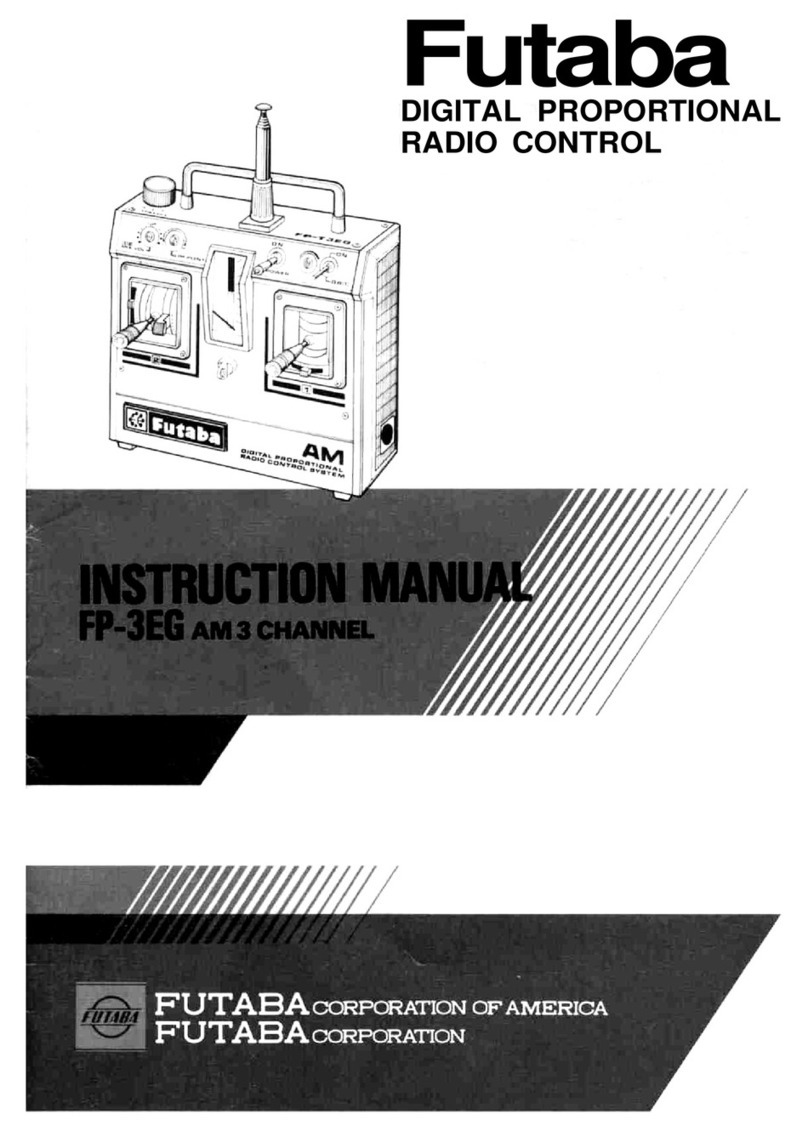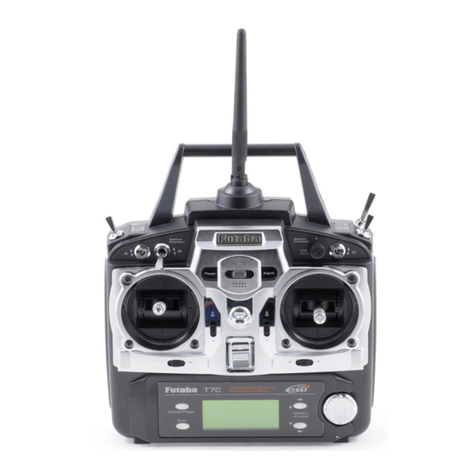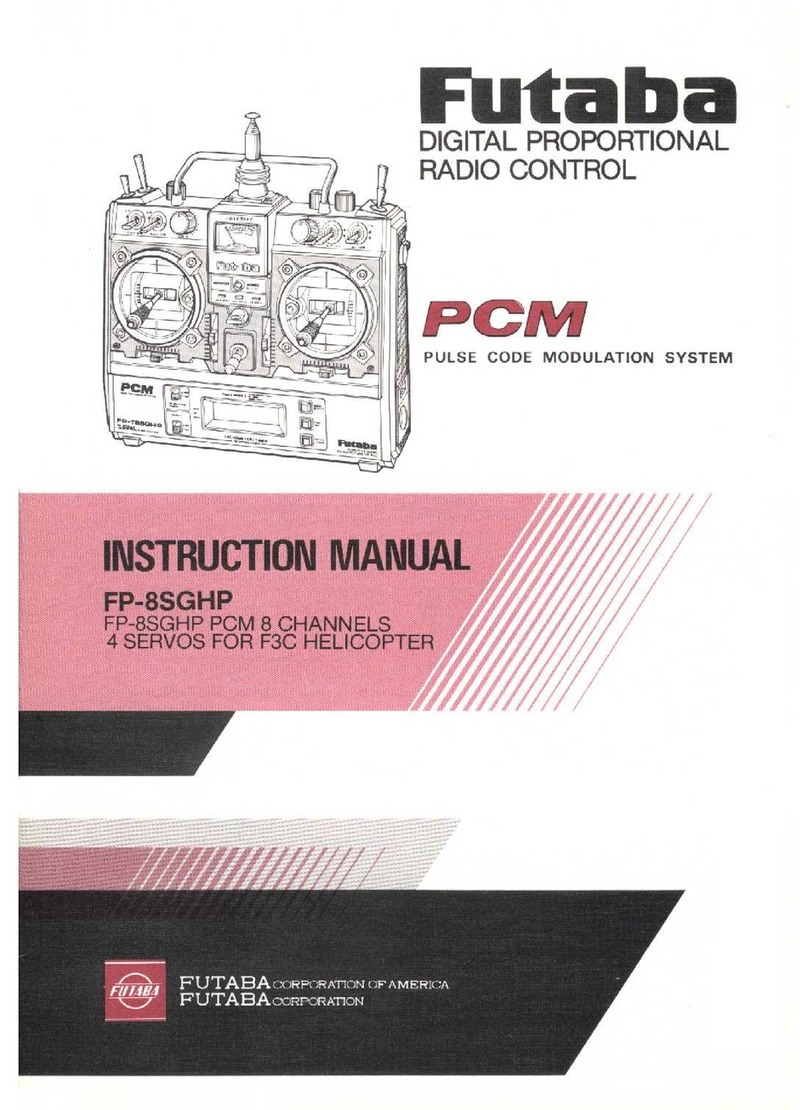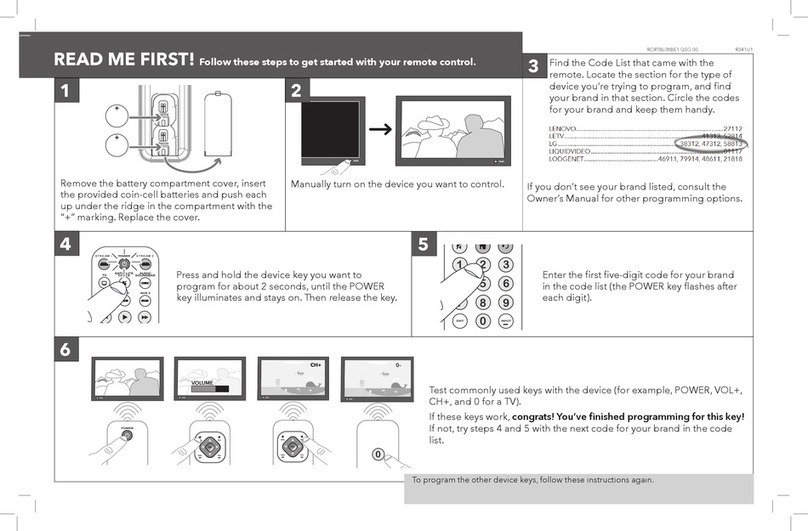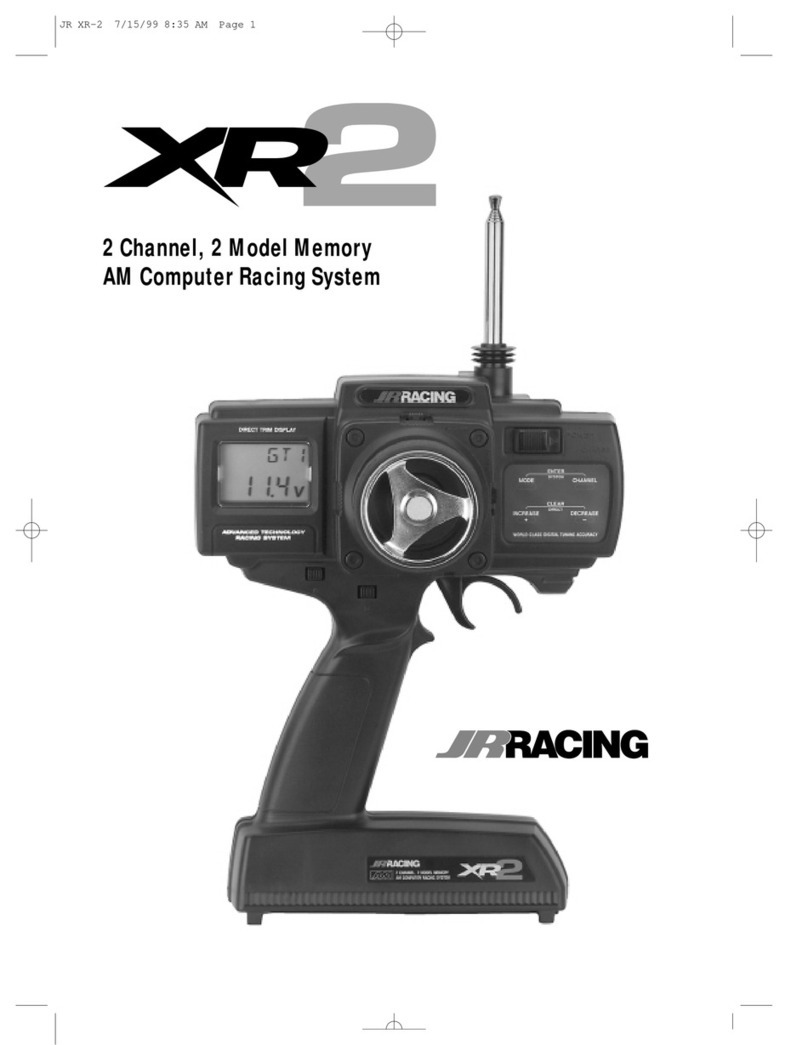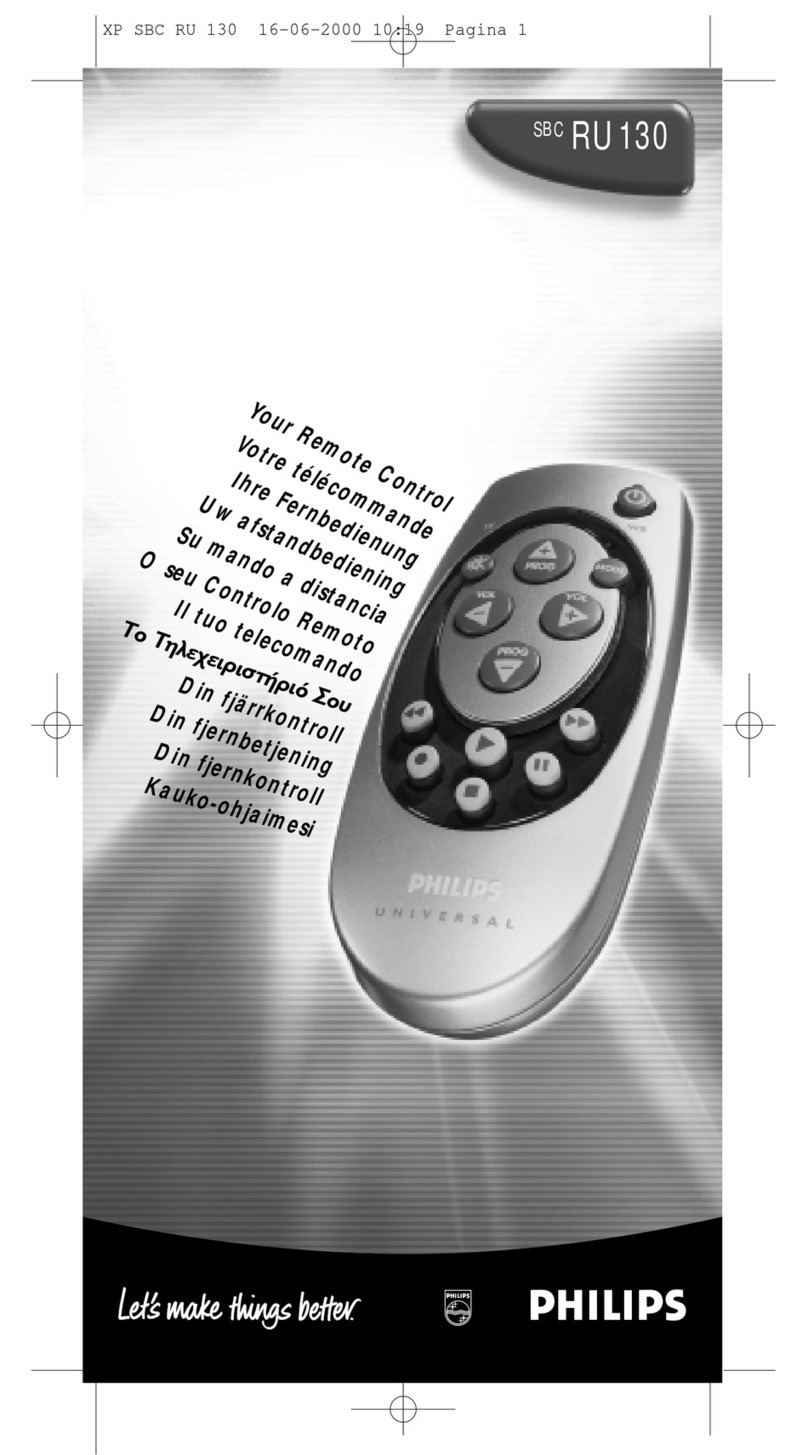
6
Steering operation curve/ Throttle curve/ Brake curve adjustment.
Steering curve..........................................................................76
Throttle curve (Forward side) ...................................................78
Brake curve .............................................................................81
Speed ...........................................................................................82
Steering/ Throttle servo delay adjustment
Steering speed .........................................................................82
Throttle speed ..........................................................................84
A.B.S.............................................................................................88
Pulse brake
Traction Control...........................................................................93
Function to make traction progress by intermittently moving the throttle
Start ..............................................................................................97
Throttle preset at start function
Engine Cut ...................................................................................99
Engine cut off by switch
Steering Mixing..........................................................................101
Twin servo steering system
Brake Mixing ..............................................................................104
Front and rear independent brake control for 1/5 GP car, etc.
Gyro Mixing................................................................................108
Use to set the Futaba car rate gyro
4WS Mixing ................................................................................111
Special mixing used with Crawler and other 4WS type vehicles
Dual ESC ....................................................................................114
Front ESC and rear ESC
CPS Mixing.................................................................................116
Controls the Futaba CPS-1 channel power switch
Tank Mixing................................................................................118
This function is intended for vehicles such as tanks
Program Mixing (1, 2, 3, 4, 5 ) ...................................................120
Programmable mixes between arbitrary channels
Tilt Mixing...................................................................................123
Outboard engine
Timer...........................................................................................125
Up, Fuel down, lap, or lap navigation timer
Lap List.......................................................................................132
Lap timer data (lap time, average lap time) check
S.BUS Servo...............................................................................133
Special function, Futaba S.BUS/S.BUS2 servo parameter / SR mode setup
MC (ESC) Link............................................................................139
Special function, Futaba ESC (MC960CR, MC851C, MC602C, MC402CR...etc.)
Roll Out Chart ............................................................................148
Gear Ratio Chart........................................................................149
HOME Button Setting................................................................150
